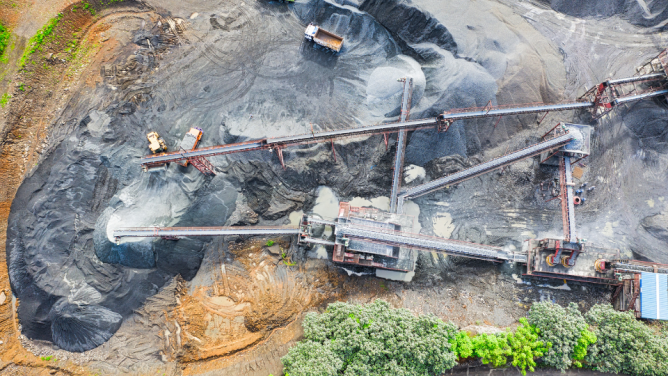Polycrisis and shortages
A memorandum on the economic situation commissioned by the French National Council of the Order of Architects explains that the current crisis is characterised by “supply chain issues and an increase in the cost of materials due to an increase in energy prices.” These trends are direct consequences of the pandemic and the supply chain bottleneck that accompanied the economic recovery. Added to this is the war in Ukraine, which raises fears of a long-term crisis, particularly for the steel sector which is highly dependent on Russia and Ukraine, who are the EU’s main suppliers.
In pictures
Azovstal plant, which became a symbol of Ukrainian resistance, was also a major player in steel supply chains in Europe. It used to produce a fifth of Ukrainian steel and 3.8% of the country’s goods exports. It was also the only Ukrainian manufacturer of railway rails. Metinvest’s Italian and British plants were entirely dependent on the production of the embattled plant in Mariupol.
Widespread inflation
Such global crises lead to a whole host of consequences, the result of which is widespread inflation. Since January 2020, steel, aluminium semi-finished products and concrete elements have risen in France by 80%, 60% and 7% respectively. The causes are largely interconnected, with the main culprits being energy, transport costs and high demand. Gas and electricity – whose prices have more than doubled since the start of the year – represent 10% of costs for steel producers. Meanwhile, shipping costs have multiplied by five since 2019, driving import prices to increase too.
Delays and bankruptcies prompt a call for action
The consequences of the raw materials shortage are colossal. In France, three-quarters of construction projects are behind schedule due to materials shortages. In the UK, more than 200 businesses in the construction industry collapsed each month in 2021, mostly due to supply concerns or rising prices. As such, the Fédération Française du Bâtiment (the French Building Federation) has called on the government to implement an effective recovery plan, including VAT rate cuts on fuels, a freeze on energy and fuel prices, and a guarantee to cover all costs during periods of partial activity caused by shortages. In India, a measure to lower taxes on cement and steel imports has been implemented to help counteract inflation.
Sustainable alternatives: turning the crisis into an opportunity
A whole range of solutions exist to combat the shortage. The crisis has provided an opportunity to create new sectors and scale up.
- Promote circular economy strategies: The circular economy is an important issue for Léonard. Renowned for their environmental virtues, recycling and reusing are also interesting during times of shortage. While they offer local and readily available solutions, they do however require a real cultural change. Approximately 1% of construction materials are currently reused and the sector is only just starting to become structured. Urban mines mapping is undoubtedly one of the first steps. This practice consists of assessing the number of materials available in a building, thus the idea that existing budlings are no longer considered as future waste, but as future resources.
- Use new materials: Again directly linked to circular strategies, creating new materials can also offer solutions by bringing demand on products that are less in demand. A composite concrete like TimberRoc is made from 90% recycled wood chip. Meanwhile, “fly ash” bricks made from a by-product of burning coal are becoming increasingly popular in India. In the wake of the shortage, other inexpensive, available and effective materials are set to make a comeback: bamboo combines lightness and solidity, straw offers excellent insulation and cob is widely available.
- Limit the use of materials. Adapting construction processes to limit the amount of materials used is also an option. For example, a recent panel discussion organised by PaperJam in Luxembourg highlighted how reverting back to less restrictive standards in reinforced concrete would be beneficial. The principality imposes 120 to 130 kilos of scrap iron per cubic meter of concrete, compared to 80 to 90 kilos in France. Prefabricated insulated panels also save significant amounts of wood. A study by The Royal Society also shows that utilisation of structural steel in buildings is below 50% of its capacity. This means that design optimization – particularly with BIM simulation – could cut steel usage in half!
The special case of sand
While sand is the building material par excellence, it’s also on the brink of running out. However, here it’s not solely due to supply chain issues or the conjunctural crisis. Sand suitable for construction is disappearing as the result of over-consumption, with serious environmental consequences.
As the current crisis is looking to last, industry players cannot simply turn their backs on the situation. Like in many other sectors, adaptation is needed to reduce foreign dependency and develop local, virtuous industries. An opportunity for the circular economy in construction?


